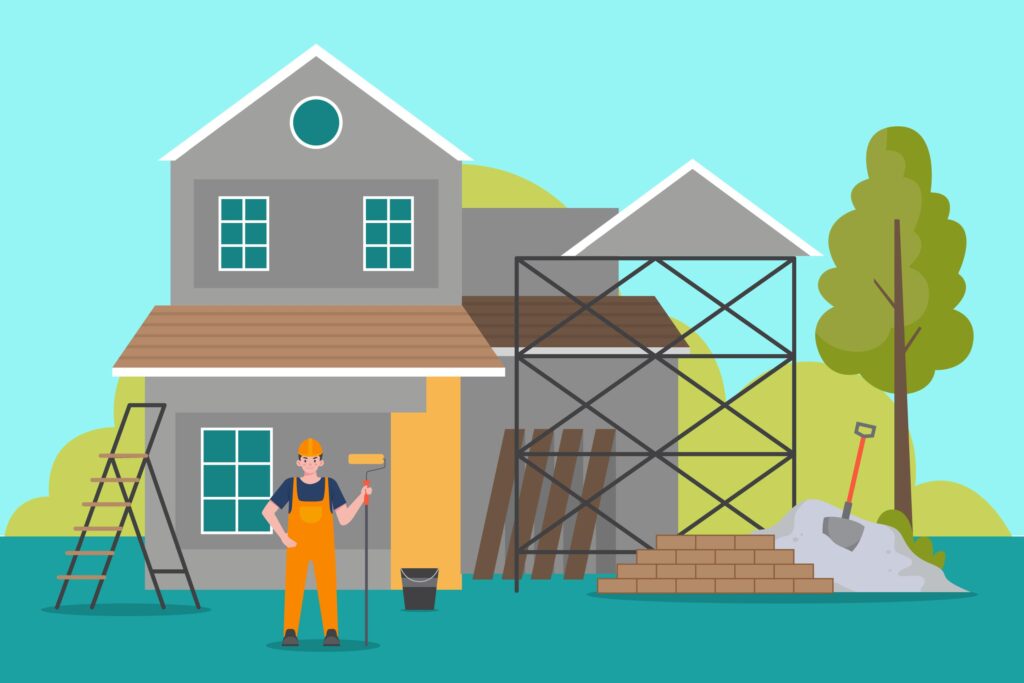
Subsidence can pose a significant threat to the stability and safety of your property. When the ground beneath a building shifts or sinks, it can cause severe damage to the foundation, walls, and overall structure. Subsidence is a serious issue that requires prompt and professional repair to avoid long-term, costly problems.
This blog will explore everything you need to know about subsidence repair, including signs of subsidence, causes, and the repair methods available. By understanding the risks and solutions, homeowners can better protect their properties and avoid the potential financial burden subsidence can bring.
What is Subsidence?
Subsidence occurs when the ground beneath a building sinks or shifts, causing the foundation to move unevenly. As a result, the structure may become unstable, leading to cracks in walls, misaligned doors, windows that are difficult to open, and other structural issues.
Unlike settlement, a natural process that occurs when a new building settles into its foundation, subsidence is often caused by external factors. It is a more serious issue that can worsen if left untreated.
Common Causes of Subsidence
Several factors can contribute to subsidence. Understanding these causes is key to preventing and addressing the issue effectively:
- Clay Soil
Buildings constructed on clay soil are especially susceptible to sinking. Clay expands when wet and contracts when dry, causing the ground to shift. During long periods of dry weather, the soil beneath a property can shrink, leading to movement in the foundation.
- Tree Roots
Large trees and shrubs growing near a property can exacerbate subsidence, especially when they absorb moisture from the surrounding soil. Tree roots can also disrupt the ground, creating voids beneath the foundation.
- Leaking Pipes
Burst or leaking pipes can wash away the soil beneath a building, leading to subsidence. Water undermines the foundation’s support, causing the structure to settle unevenly.
- Groundworks
Nearby construction or excavation work can disturb the ground around your property, leading to movement in the soil and potential subsidence.
- Underground Mining or Cavities
Properties built over former mining areas or natural underground cavities can experience subsidence if these spaces collapse or shift over time.
Signs of Subsidence
Recognising the early signs of subsidence is crucial for minimising damage and ensuring timely repairs. Watch out for the following indicators:
Cracks in Walls: Subsidence often causes cracks, especially around doors and windows. These cracks are typically diagonal and wider than 3mm.
Sticking Doors or Windows: If doors and windows suddenly become difficult to open or close, it could indicate that the frames have shifted due to foundation movement.
Sloping Floors: Uneven or sloping floors may suggest the foundation is no longer level due to subsidence.
Gaps between Walls and Window Frames: Gaps between the window frames and surrounding walls are a telltale sign of subsidence.
Subsidence Repair Methods
Addressing subsidence requires a professional approach, as improper repair can worsen or lead to future problems. The repair method depends on the severity of the subsidence and the underlying cause.
Here are the most common subsidence repair methods:
- Underpinning
Underpinning is one of the most widely used and effective subsidence repair methods. It involves strengthening and stabilising the foundation by extending it deeper into the ground where the soil is more stable. There are several types of underpinning, including:
Mass Concrete Underpinning: This traditional method involves excavating small sections beneath the foundation and filling them with concrete to provide extra support.
Mini-Piled Underpinning: This method is suitable for properties where the subsidence is caused by unstable or clay-rich soil. Piles are driven deep into the ground to reach a stable layer, providing additional support to the foundation.
Beam and Base Underpinning: In this technique, reinforced beams are installed to spread the weight of the building more evenly across the foundation.
- Soil Stabilisation
In cases where subsidence is caused by unstable soil, soil stabilisation may be used. This involves injecting a special resin or grout into the ground to fill voids and compact the soil, preventing further movement. It’s a non-invasive technique that can often be completed more quickly than underpinning.
- Root Barriers
If subsidence is caused by tree roots, installing root barriers can help prevent further damage. These barriers are installed underground to stop tree roots from encroaching on the property’s foundation. In some cases, removing the offending tree may be necessary, though this should always be done with professional advice to avoid destabilising the soil further.
- Fixing Leaks
For subsidence caused by leaking pipes, fixing the plumbing issue is the first step in repair. Once the leak is resolved, the surrounding soil may naturally settle back into place, though underpinning or soil stabilisation may still be required.
Preventing Subsidence
While some factors that cause subsidence are beyond your control, there are steps you can take to reduce the risk of subsidence affecting your property:
Tree Management: If you have large trees or shrubs near your property, ensure they are properly managed and pruned. There are situations when removing trees that pose a serious risk, which could be essential.
Maintain Drains and Pipes: Regularly inspect your property’s drainage and plumbing systems for leaks or blockages that could lead to soil erosion.
Monitor Cracks: If you notice small cracks in your property, don’t ignore them. Monitor their progression and consult a professional if they worsen or new cracks appear.
Consult a Surveyor: If you are buying a property in an area prone to subsidence or you are concerned about the condition of your home’s foundation, hiring a chartered surveyor for a full structural survey can provide peace of mind.
